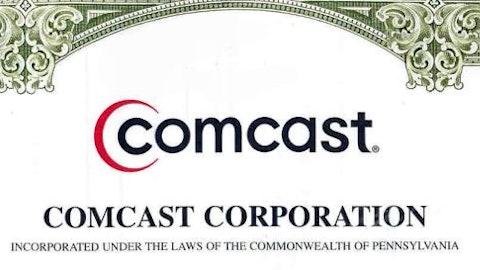Recently, Joshua Sapan, the CEO of AMC Networks Inc (NASDAQ:AMCX), sold as many as 93,950 shares of the company he manages at around $66.95 per share, for a total transaction value of nearly $6.3 million. Since the beginning of the year, AMC has gained nearly 25% on the market, beating the S&P 500’s return of 12.8%. Should we follow the CEO in selling AMC Networks Inc (NASDAQ:AMCX)’s shares? Let’s find out.
The highest valuation with a weak balance sheet

In the past four years, AMC Networks Inc (NASDAQ:AMCX) has experienced consistent growth in its top and bottom lines. Revenue rose from $974 million in 2009 to more than $1.35 billion in 2012 while net income increased from $54 million to $137 million during the same period. The business has been a cash cow with rising free cash flow, from $142 million to $551 million during the past four years.
What investors might be worried about is its weak balance sheet. As of March 2013, it had negative equity of $825 million, $555 million in cash, and as much as $2.15 billion in long-term debt. The market values AMC Networks Inc (NASDAQ:AMCX) at 13 times EV/EBITDA.
Its ex-parent has negative free cash flow
It is much more expensive than its ex-parent, Cablevision. At around $14.90 per share, Cablevision is worth around $4 billion on the market. The market values Cablevision at only 7.77 times EV/EBITDA. In the first quarter of 2013, Cablevision reported sluggish earnings results. Its revenue declined a bit, from $1.53 billion in the first quarter last year to $1.52 billion. However, net income was much worse, dropping to a loss of more than $16.4 million from a profit of $57.3 million in Q1 2012.
In the first quarter this year, the company had around 5,200 customer relationship additions, with around 22,800 High Speed Data and Voice customer additions, each. The average monthly revenue per basic video customer has grown 1.3% to $156.34. Because of the significant capital expenditure, including consumer premise equipment, scalable infrastructure and support, its free cash flow turned out to be negative at $51.6 million. James Dolan, Cablevision Systems Corporation (NYSE:CVC)’s President and CEO, expects positive operating performance in the second quarter due to the company’s recent pricing moves and improved advertising outlook.
Comcast Corporation (NASDAQ:CMCSA) seems to be a good pick now
The biggest player, Comcast Corporation (NASDAQ:CMCSA), seems to be the cheapest valued on the market. Comcast is trading at around $40.20 per share with a total market cap of $105.9 billion. The market values Comcast at only 7.3 times EV/EBITDA. Comcast had a much more positive operating picture than Cablevision in the first quarter of 2013. Its revenue rose 2.9% to $15.3 billion while free cash flow increased 3.3% to nearly $3.14 billion. Interestingly, Comcast managed to grow its EPS 20%, from $0.45 per share in the first quarter last year to $0.54 per share in the same period this year.
Excluding the wireless spectrum licenses divestment, its adjusted EPS increased 13.3%. While the number of video customers decreased, Comcast had around 433,000 and 211,000 additions in high-speed Internet customers and voice customers, respectively. The total customer additions for Comcast were 583,000, to 51.9 million customers in Q1 2013. Chairman and CEO Brian Roberts feels quite positive about Comcast’s future, after the completion of the NBCUniversal acquisition during the quarter.
Income investors might like Cablevision the most with its highest dividend yield at 4%. However, the payout ratio is as high as 100%, meaning that the company pays all of its earnings in dividends. Comcast offers a lower dividend yield at 1.90%, however, it only pays out 27% of its earnings in dividends. AMC does not pay any dividends.
My Foolish take
AMC is not a good stock to accumulate at the moment because of its high valuation, selling of shares by the CEO, and a weak balance sheet. Among the three, I like Comcast the most with its low valuation, a reasonable dividend yield but conservative payout ratio, and strong operating performance.
The article Should We Be Bearish on This Stock After Recent Insider Sales? originally appeared on Fool.com and is written by Anh Hoang.
Anh HOANG has no position in any stocks mentioned. The Motley Fool recommends AMC Networks. Anh is a member of The Motley Fool Blog Network — entries represent the personal opinion of the blogger and are not formally edited.
Copyright © 1995 – 2013 The Motley Fool, LLC. All rights reserved. The Motley Fool has a disclosure policy.



